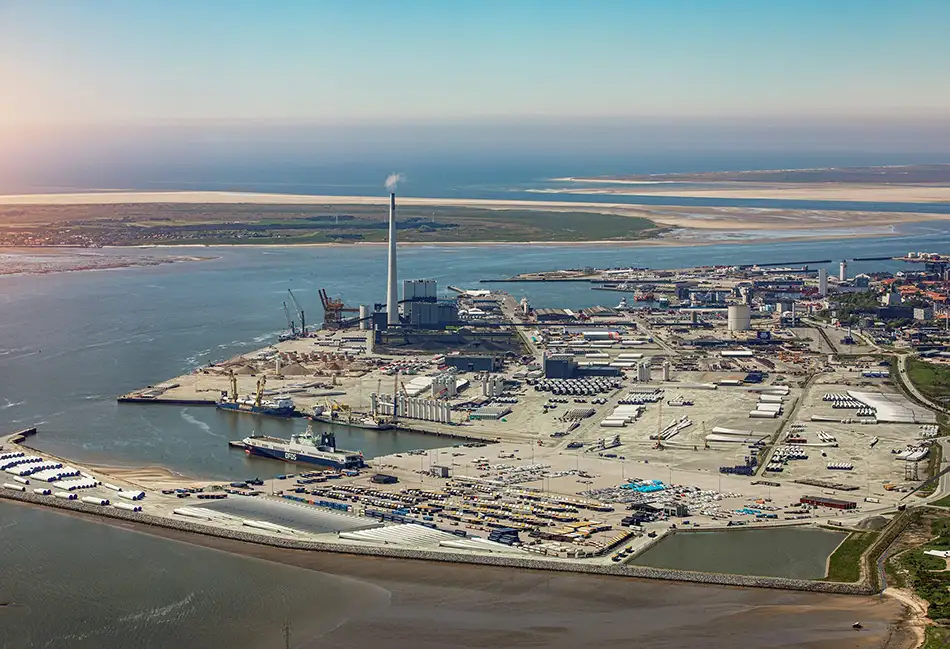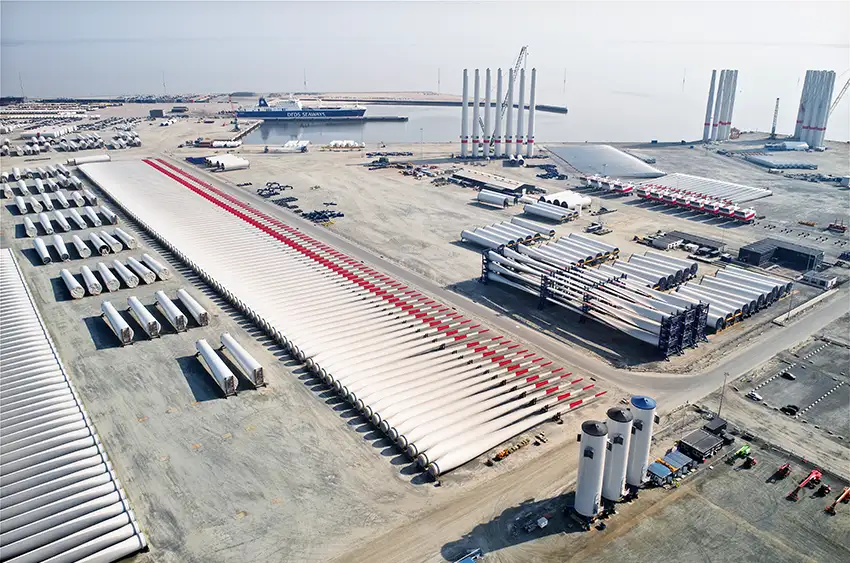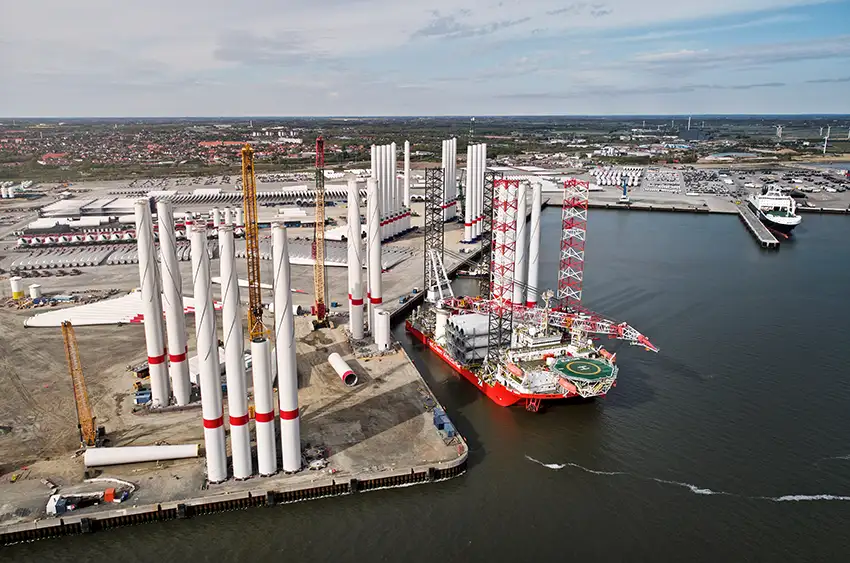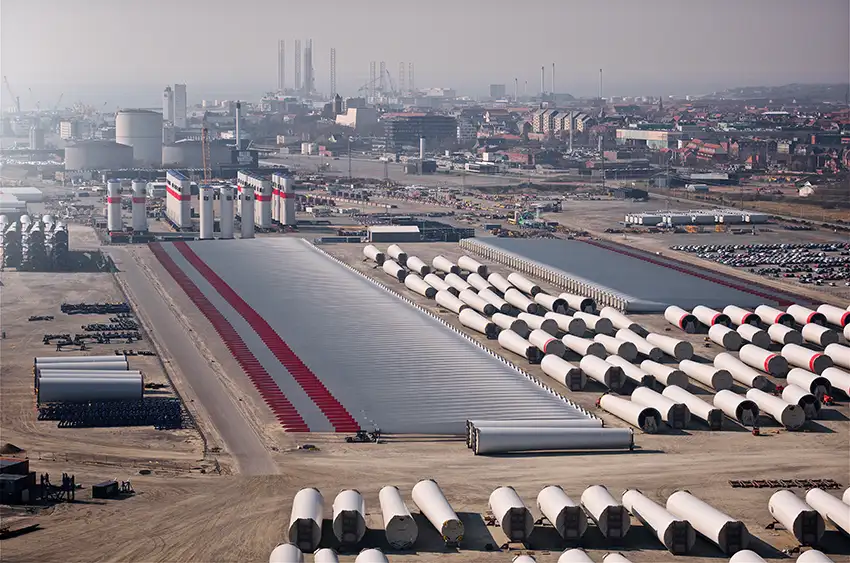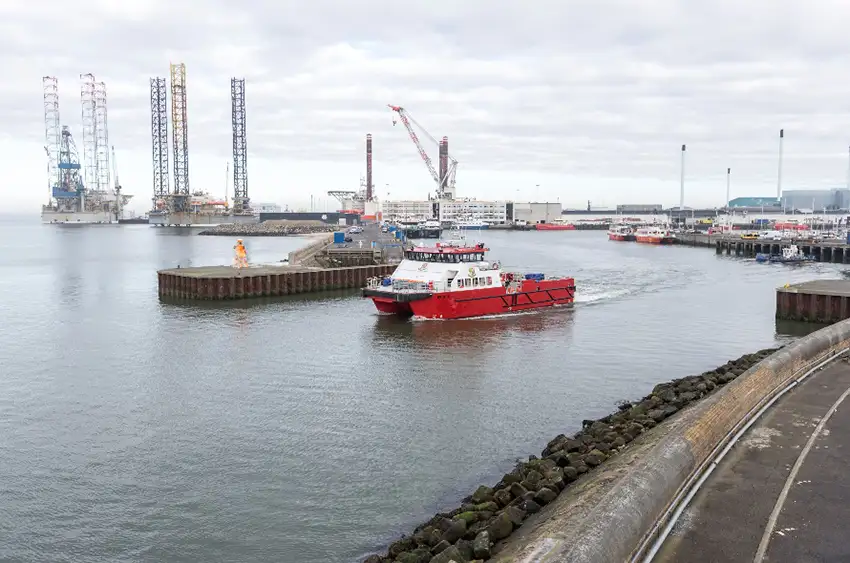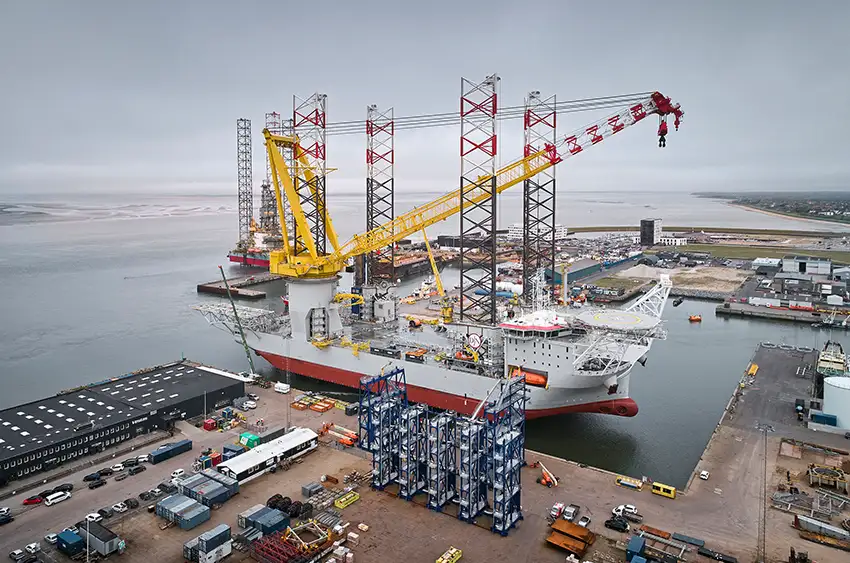Esbjerg's specialization
What we can achieve
Port Esbjerg and offshore wind
Port Esbjerg has been active with offshore wind since 2001 and has until today been involved in over 60 wind farm projects, with a total capacity of over 24 GW. The port continues the expansion and expects a total annual load out capacity of 300 turbines per year corresponding to +4.5 GW.
Port Esbjerg as Service port
6 wind farms are currently being serviced with Port Esbjerg as a base. The port has dedicated port sections for service companies with storage and operational facilities directed by the quay and a total capacity to handle more than 30 Crew Transfer Vessels.
A Heliport is located in proximity of the port.
Port Esbjerg as supply chain port
There are over 60 companies at the port that are directly involved in servicing vessels, trucks, cranes and other special equipment used in connection with handling of wind turbine components. The port has dedicated port sections which are used for the mobilization and demobilization of installation vessels and larger Supply Vessels.
Port Esbjerg
The world’s largest base port for offshore wind activities
Port Esbjerg is Europe’s leading port for handling and shipping components for the offshore wind industry. The companies based in the port, several of which are global leaders, cover the entire supply chain from research and developement over manufacturing to shipping and maintenance for the wind industry. Of the offshore wind capacities installed in Europe, 80% of the installations were shipped from Port Esbjerg.
One of the port’s major competitive advantages is its fundamental connection between production sites in Northern Europe and the offshore wind farms in the North Sea and surrounding waters. To meet the port’s demands, technologies have been implemented to optimize capacities. A digital twin, which virtually mirrors the port in real-time, has been developed. Through simulations and machine learning, this helps to triple the port’s capacities.
About us
Port Esbjerg
Port Esbjerg is Denmark’s leading offshore port, a hub for freight traffic in Northern Europe, particularly for RoRo cargo, and one of the world’s largest departure ports for wind energy. The port has also been the main base for all oil and gas activities in the Danish North Sea for over 50 years.
The port covers a total area of 4,750,000 m², with an annual cargo throughput of 4.3 million tons. Up to 1,500 MW of offshore wind turbines are shipped annually, and the port records around 6,000 ship calls per year. Additionally, the port hosts more than 200 companies employing over 10,000 people.
In transitioning from old to new technologies, Port Esbjerg has experienced substantial job growth while attracting investments, residents, and a workforce that contribute to the prosperity of the region and Denmark.
History
Development of the Port Over the Centuries
Since 1874, Port Esbjerg has been the main center for maritime traffic and trade between Denmark and the rest of the world. The construction of Port Esbjerg was decided in 1868 after Denmark lost the Port of Altona in the Second Danish-Prussian War. From the beginning, trade between Denmark and England was a significant business area for the port.
For a long time, Port Esbjerg was primarily used for fishing and eventually developed into Denmark’s largest fishing port by 1970, home to around 600 fishing boats. Later, a structural change in the fishing industry occurred, replacing individual fishermen with larger enterprises. This shift displaced many of the fishermen, leaving only a few remaining in Esbjerg today.
By the turn of the millennium, Port Esbjerg had established itself as the main base for oil and gas in Denmark. The first oil was extracted from the Dan Field in the North Sea in 1971. During this time, a new business area also emerged: offshore wind energy. Since 2002, this sector has developed rapidly, and Esbjerg is now Europe’s leading port for offshore wind energy.
